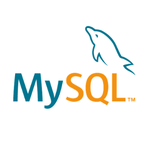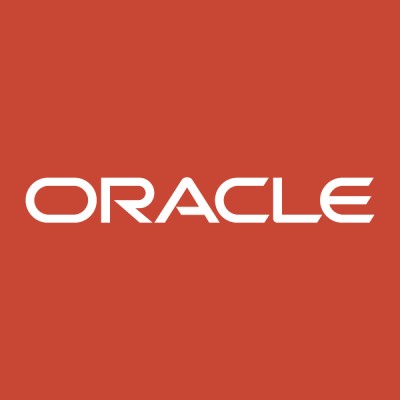The Rise of Modern Database Solutions: Debezium and TrueSql
February 10, 2025, 5:07 pm
In the world of technology, databases are the backbone. They store our data, power our applications, and keep our businesses running. But as the landscape evolves, so do the tools we use to manage our data. Two standout solutions have emerged recently: Debezium and TrueSql. Each offers unique advantages, addressing the growing complexities of data management in modern applications.
Debezium is like a conductor in an orchestra, harmonizing data from various sources into a single, coherent output. Its primary function is Change Data Capture (CDC), which allows real-time data synchronization across different databases. Imagine trying to juggle multiple balls while keeping them all in the air. That’s what Debezium does for data. It captures changes in one database and reflects them in another, ensuring consistency and accuracy.
The implementation of Debezium is not without its challenges. Setting it up can feel like assembling a complex puzzle. You need to configure connectors, manage Kafka topics, and ensure that your databases are compatible. But once it’s up and running, the benefits are clear. Debezium supports a wide range of databases, from PostgreSQL to MongoDB, making it a versatile choice for developers.
One of the key strengths of Debezium is its ability to handle large volumes of data. In a recent project, a team managed to transfer 1.5 TB of data in just seven hours. This efficiency is crucial for businesses that rely on real-time data for decision-making. However, it’s not all smooth sailing. Users have reported challenges with data type support and performance under heavy loads. Still, the ability to capture every change in real-time is a game-changer for many organizations.
On the other side of the spectrum is TrueSql, a modern database connector designed to streamline the development process. Think of TrueSql as a Swiss Army knife for Java developers. It simplifies database interactions, reducing the amount of boilerplate code required. In a world where every line of code counts, TrueSql shines by minimizing complexity.
TrueSql is not an ORM or a traditional query builder. Instead, it focuses on providing a straightforward API that allows developers to interact with databases more intuitively. With features like compile-time query validation and automatic DTO generation, TrueSql eliminates many common pain points associated with database programming. Imagine writing a single line of code that automatically generates the necessary classes and handles data fetching. That’s the promise of TrueSql.
The design philosophy behind TrueSql emphasizes efficiency. It aims to reduce the size of the codebase significantly. In fact, projects using TrueSql can be four times smaller than those built with traditional frameworks like Hibernate. This reduction in code not only speeds up development but also makes maintenance easier. The library is lightweight, with a total implementation size of just 10,000 lines of code, compared to the hefty 1.3 million lines of Hibernate.
TrueSql also boasts impressive performance metrics. It matches the speed of JDBC while providing additional safety features, such as SQL injection protection. This combination of speed and security makes it an attractive option for developers looking to build robust applications without the overhead of traditional ORM frameworks.
While Debezium and TrueSql serve different purposes, they both address the evolving needs of modern software development. Debezium excels in data synchronization, ensuring that changes in one database are reflected in another in real-time. TrueSql, on the other hand, simplifies database interactions, allowing developers to write cleaner, more efficient code.
Together, these tools represent a shift in how we approach data management. As applications become more complex, the need for efficient, reliable, and scalable solutions grows. Debezium’s ability to handle real-time data changes complements TrueSql’s focus on simplifying database interactions. This synergy can lead to more agile development processes and faster time-to-market for new features.
In the fast-paced world of technology, staying ahead means embracing new tools and methodologies. Debezium and TrueSql are at the forefront of this evolution, offering solutions that cater to the demands of modern applications. As businesses continue to rely on data-driven decision-making, the importance of effective data management tools cannot be overstated.
The future of database management lies in the hands of developers who are willing to explore these innovative solutions. By leveraging the strengths of Debezium and TrueSql, organizations can build applications that are not only efficient but also resilient in the face of change. The landscape of data management is changing, and those who adapt will thrive in this new era.
Debezium: The Data Synchronization Maestro
Debezium is like a conductor in an orchestra, harmonizing data from various sources into a single, coherent output. Its primary function is Change Data Capture (CDC), which allows real-time data synchronization across different databases. Imagine trying to juggle multiple balls while keeping them all in the air. That’s what Debezium does for data. It captures changes in one database and reflects them in another, ensuring consistency and accuracy.
The implementation of Debezium is not without its challenges. Setting it up can feel like assembling a complex puzzle. You need to configure connectors, manage Kafka topics, and ensure that your databases are compatible. But once it’s up and running, the benefits are clear. Debezium supports a wide range of databases, from PostgreSQL to MongoDB, making it a versatile choice for developers.
One of the key strengths of Debezium is its ability to handle large volumes of data. In a recent project, a team managed to transfer 1.5 TB of data in just seven hours. This efficiency is crucial for businesses that rely on real-time data for decision-making. However, it’s not all smooth sailing. Users have reported challenges with data type support and performance under heavy loads. Still, the ability to capture every change in real-time is a game-changer for many organizations.
TrueSql: The Simplified Database Connector
On the other side of the spectrum is TrueSql, a modern database connector designed to streamline the development process. Think of TrueSql as a Swiss Army knife for Java developers. It simplifies database interactions, reducing the amount of boilerplate code required. In a world where every line of code counts, TrueSql shines by minimizing complexity.
TrueSql is not an ORM or a traditional query builder. Instead, it focuses on providing a straightforward API that allows developers to interact with databases more intuitively. With features like compile-time query validation and automatic DTO generation, TrueSql eliminates many common pain points associated with database programming. Imagine writing a single line of code that automatically generates the necessary classes and handles data fetching. That’s the promise of TrueSql.
The design philosophy behind TrueSql emphasizes efficiency. It aims to reduce the size of the codebase significantly. In fact, projects using TrueSql can be four times smaller than those built with traditional frameworks like Hibernate. This reduction in code not only speeds up development but also makes maintenance easier. The library is lightweight, with a total implementation size of just 10,000 lines of code, compared to the hefty 1.3 million lines of Hibernate.
TrueSql also boasts impressive performance metrics. It matches the speed of JDBC while providing additional safety features, such as SQL injection protection. This combination of speed and security makes it an attractive option for developers looking to build robust applications without the overhead of traditional ORM frameworks.
The Intersection of Debezium and TrueSql
While Debezium and TrueSql serve different purposes, they both address the evolving needs of modern software development. Debezium excels in data synchronization, ensuring that changes in one database are reflected in another in real-time. TrueSql, on the other hand, simplifies database interactions, allowing developers to write cleaner, more efficient code.
Together, these tools represent a shift in how we approach data management. As applications become more complex, the need for efficient, reliable, and scalable solutions grows. Debezium’s ability to handle real-time data changes complements TrueSql’s focus on simplifying database interactions. This synergy can lead to more agile development processes and faster time-to-market for new features.
Conclusion: Embracing the Future of Data Management
In the fast-paced world of technology, staying ahead means embracing new tools and methodologies. Debezium and TrueSql are at the forefront of this evolution, offering solutions that cater to the demands of modern applications. As businesses continue to rely on data-driven decision-making, the importance of effective data management tools cannot be overstated.
The future of database management lies in the hands of developers who are willing to explore these innovative solutions. By leveraging the strengths of Debezium and TrueSql, organizations can build applications that are not only efficient but also resilient in the face of change. The landscape of data management is changing, and those who adapt will thrive in this new era.


